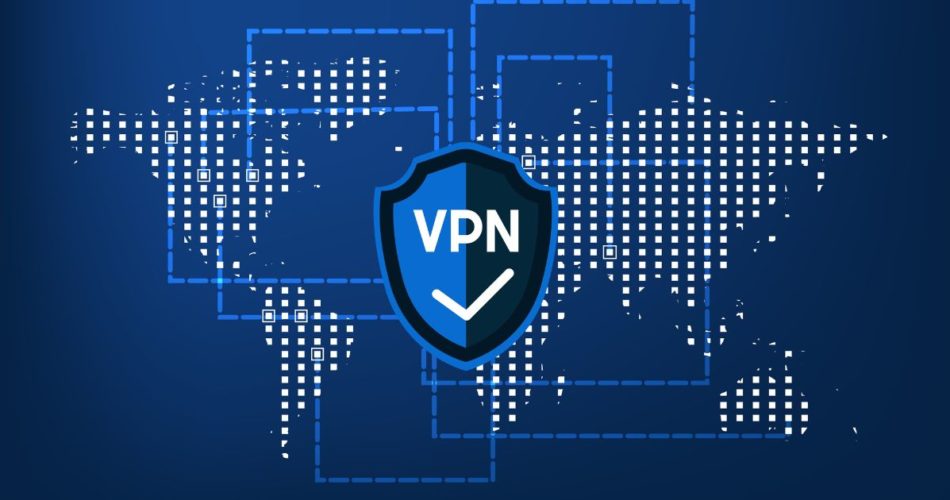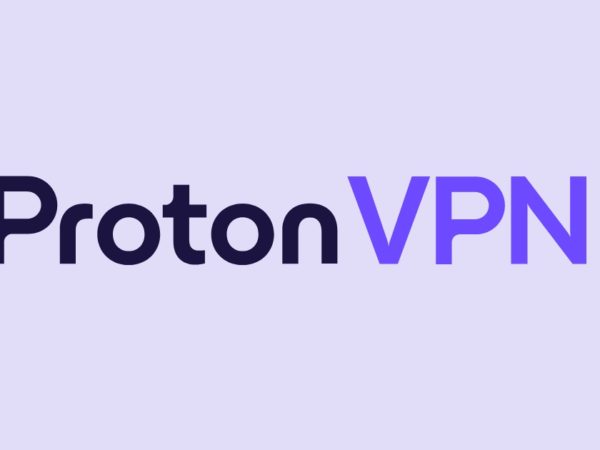Surfshark vs. ExpressVPN? Join me in this detailed analysis if this question gives you sleepless nights 😀.
Marketers often parade ExpressVPN as the best VPN in the entire industry! I have reviewed ExpressVPN, and the results were actually great. But I have also tested Surfshark, which came out excellent as well.
So, buy them both if you plan to have two VPNs. Or, continue reading if you’re here to choose the winner.
Surfshark vs ExpressVPN
Surfshark is a member of the NordSecurity family, which also owns NordVPN, NordPass, NordLayer, NordLocker, and the 2021 acquired AtlasVPN.
ExpressVPN, on the other hand, belongs to Kape Technologies, which controls a few other brands, such as Private Internet Access, CyberGhost VPN, Zenmate VPN, Intego Antivirus, and Webselenese.
Consequently, both aren’t independent, with some sort of sharing taking place behind the scenes.
While it’s not bad for an average consumer, high-stakes users often try to opt for a VPN brand completely stationed in a single place and 100% isolated from other entities.
This helps evaluators to accurately gauge the risks from a security standpoint should a legal battle come up.
However, again, a standard user has nothing to do with that. And these reviews all over the internet, including ours, mostly target them. Specifically, the objective is to see their speeds, encryption, and geo-unblocking and comment on the overall usability.
In this post, I’m going to compare them on a few vital parameters, including:
- Server network
- Onboarding
- User interface
- Security & Privacy
- Speed test
- Encryption test
- Streaming unlock
- Device compatibility
- Customer support
- Value for money
We will check who wins each of these rounds and will total it in the end to declare the winner among the two.
Before starting, please note I’m testing both of them on my Windows 11 laptop.
Server Network
Surfshark VPN
Currently, Surfshark has 3200 servers in roughly 100 countries. That’s normally enough for most users. You will find two types of servers in that list: physical and virtual.
Physical means the server is “physically” stationed in the country. Virtual indicates server presence in another country but connects via the IP address of the listed country, as mentioned in the user interface.
VPN companies install virtual servers to avoid issues in unfriendly or privacy-invasive countries. Besides, they also try to cover more locations without going through the cost of installing physical servers.
One can check for the specific server type in its user interface.
ExpressVPN
As of this writing, ExpressVPN has servers in 105 countries. However, I couldn’t find any official source indicating the total number of servers.
ExpressVPN is more open about virtual servers than Surfshark and maintains a support article indicating servers from different locations.
Moreover, you can also check its UI to see if you’re connecting through virtual servers.
Conclusion: Both have an extensive server network. Still, the fact that you can check ExpressVPN’s virtual servers outside of its user interface (which will require signing up) is a huge plus because connecting via a virtual server decreases speed significantly.
I would’ve loved ExpressVPN to open up about the total number of servers, but the locations list serves just fine. So, while there is little difference between the server network, ExpressVPN is more transparent about it.
Winner: ExpressVPN
Onboarding
Surfshark VPN
Surfshark asks for an email address and offers multiple payment options, including card, PayPal, Google Pay, Amazon Pay, and cryptocurrency (Bitcoin, Ethereum, etc.)
I used my debit card to pay for a month.
I chose the base monthly plan, without its antivirus, private search, dark web scanner, etc., which were offered under its Surfshark One and One packages.
It all went fine, and I set my account password and downloaded its Windows app.
ExpressVPN
Similarly, you can start using ExpressVPN by providing your email address, name, and zip code (optional). The payment channels were many, such as credit card, PayPal, Bitcoin, and others.
I opted for the card payment option, but strangely, the initial five attempts were unsuccessful, even when I tried two different debit cards (one of which I had used to successfully purchase Surfshark VPN). Eventually, it worked via PayPal.
You get an activation code to initiate ExpressVPN applications. Lastly, the purchase comes with ExpressVPN keys and their homegrown password manager.
Conclusion: ExpressVPN has a smoother onboarding process due to its activation code-supported login, which can be easily copied within the applications. Furthermore, just like Surfshark VPN, you can use your registration email to sign in to ExpressVPN apps.
On the other hand, Surfshark VPN provides greater flexibility in terms of multiple cryptocurrency support. Additionally, everything worked flawlessly on the very first attempt, which is a big plus.
Winner: Surfshark
User Interface
Surfshark VPN
Surfshark has updated its interface from the last time I used their app. The most visible change is you can check out the active features (on the right) on the home screen. Not only this, you can click them, and it directly takes you to the respective settings.
I found it really useful since you don’t have to peek inside every setting to check what’s on.
The home screen also directly links its specialty servers (static IP and multihop) for easy access. Once connected, the interface also indicates the active protocol, uploaded/downloaded data, connection pause button, and the current IP address.
This UI also allows setting favorite server(s), which will then queue at the top.
Overall, it’s a very modern interface, which is loaded with user-friendly elements.
ExpressVPN
In contrast, ExpressVPN opts for a straightforward dashboard design that prominently showcases a large “connect” button in the center. You can check the server list by clicking the horizontal ellipsis. The arrow alongside any server location indicates the presence of multiple servers within a specific country.
Similar to Surfshark, you have the ability to designate servers as favorites, facilitating quicker access.
The remaining settings are tucked away behind the hamburger icon in the upper-left corner.
I don’t know about the other platforms, but ExpressVPN has a nice feature for its Windows users. One can connect to the recent servers, disconnect, contact support, and do a few more things without opening the ExpressVPN dashboard.
Besides, the ExpressVPN icon in the taskbar shows this 🗸 checkmark, indicating an ongoing connection. This taskbar notification animates when it’s connecting and finally settles with the blue mark confirming a successful connection.
Indeed, it’s a small feature, but it’s very useful since you don’t have to wait for the VPN to connect, which can sometimes take a few seconds. I hope every VPN company implements this.
Conclusion: While beginners may find the ExpressVPN interface more intuitive, for me, Surfshark really aced this section with its feature-rich UI. I will go even further and say this is one of the most functional UI I have ever seen on any VPN, even better than my previous favorite, Proton VPN.
So, barring the ExpressVPN taskbar icon feature, Surfshark brings more to the table.
One thing I missed with both our contenders is the server load. This helps to pick the least crowded server, which can translate into better network speeds.
Winner: Surfshark VPN
Security & Privacy
Surfshark VPN
Surfsharks offers two of the most sought-after protocols, OpenVPN (TCP and UDP) and modified WireGuard. The modification addresses the default WireGuard configuration, which mandates a static IP, thereby revealing the user’s location. In addition, Surfshark applies obfuscation to make its WireGuard implementation robust.
Its Kill Switch has two modes, soft and strict, to disconnect the VPN connection in the case of an encryption drop. The soft modes work majorly on the server-side issues and unintentional disconnects, including server changes. Strict mode blocks the internet whenever there is no VPN connection.
Surfshark’s Bypasser (aka split tunneling) is a handy feature you can use to selectively deploy VPN encryption. It comes in two flavors for the apps: Route via VPN or Bypass VPN.
Moreover, it has a third option for specific IP addresses to evade VPN connection. This is particularly helpful if one doesn’t wish to block an entire app (ex., a web browser) but just a handful of non-sensitive websites.
Likewise, a few more security features include Invisible on LAN, Rotating IP, and NoBorders.
The first one grants privacy on the local network.
Rotating IP allocates a different VPN server IP every few minutes.
This worked as expected most of the time. However, a few instances couldn’t show the next rotation timestamp.
Its NoBorders is to grant internet access on restrictive networks in authoritarian regimes. Surfsharks says it automatically turns on if needed; however, a user can also turn it on manually. While I could not check its efficacy, users were negative towards its China connectivity:
Surfshark statement about this issue made this clear:
However, there is this 30-day money-back guarantee, which can help if things don’t work. But afterward, there is no clear-cut policy for getting refunds if a few servers don’t work.
Consequently, there might be better options if connecting from China is the ultimate objective.
Adding to the list of security features, Cleanweb blocks ads, trackers, and malware. In my brief testing, it blocked browser-based ads, which is good if you don’t want to rely on third-party blockers like uBlock Origin.
However, I would advise getting a premium antivirus for ever-evolving forms of malware.
Sometimes, connecting to a VPN on a private network isn’t necessary. Surfshark has this automated where it’ll disconnect on specific trusted networks.
Surfshark doesn’t mark specific servers as “obfuscated.” Instead, one can switch to OpenVPN protocol to use obfuscation, per the Surfshark blog post. Just so you know, this feature hides the presence of VPN connectivity to avoid unwanted restrictions on their usage.
In the July 2023 update, Surfshark announced updating their entire server network to RAM-only.
This is important in case of a face-off with law enforcement agencies. Since such servers do not store anything on a hard drive, a VPN company has nothing to hand over about its user’s private data.
Lastly, multi-hop is an excellent security feature to route the traffic from two VPN servers instead of one.
ExpressVPN
ExpressVPN offers a pair of VPN protocols similar to its competition. However, there’s a distinction in the selection this time. You have OpenVPN (UDP and TCP) and Lightway, a proprietary protocol developed in-house.
Lightway has undergone two security audits by Cure53, and it’s open source. Impressively, it consists of just 2000 lines of code, reducing potential vulnerabilities and simplifying the auditing process.
Furthermore, it provides the flexibility to select either AES-256 or ChaCha20 as your encryption cipher. With all these factors in play, Lightway should pose no issue for its takers.
Its Kill Switch primarily operates in a basic mode, typically designed to address server malfunctions.
ExpressVPN compensates for these limitations with its TrustedServer technology, which employs RAM-only servers, which is similar to Surfshark.
Additionally, ExpressVPN provides malware and tracking protection in the form of a Threat Manager. It’s essential to note that this feature functions exclusively when the VPN connection is active. In addition, this works only with its Lightway protocol.
ExpressVPN’s Split Tunnelling has two modes to selectively apply VPN encryption.
Coming to letting users connect from China, the story is similar to what we have seen with Surfshark. Users are experiencing issue to connect with ExpressVPN as well:
Conclusion: To sum it up, both offer similar protocols and have RAM-based servers. Besides, you get “no-logs” policies with either.
But where Surfshark Cleanweb works everywhere, ExpressVPN Threat Manager has this goodness reserved for users using its own protocol. In the same fashion, Surfshark has an upper edge over its competitors with better Split tunneling, rotating IP, multi-hop, and more.
Winner: Surfshark VPN
Speed Test
Note: I am using WireGuard (Surfshark) and Lightway UDP (ExpressVPN) for this speed test. The results are an average of two consecutive attempts, with the complete testing wrapped up in one go.
Surfshark VPN
| S.No. | Location | Download Speed (Mbps) | Upload Speed (Mbps) | Distance (Km) |
|---|---|---|---|---|
| 1 | Base | 84.21 | 48.88 | 0 |
| 2 | Singapore | 47.54 | 17.67 | 6,200 |
| 3 | London | 42.93 | 3.53 | 6,700 |
| 4 | New York | 40.25 | 3.31 | 12,000 |
| 5 | Tokyo | 45.83 | 4.74 | 6,200 |
ExpressVPN
| S.No. | Location | Download Speed (Mbps) | Upload Speed (Mbps) | Distance (Km) |
|---|---|---|---|---|
| 1 | Base | 89.21 | 47.42 | 0 |
| 2 | Singapore | 44.35 | 9.23 | 6,200 |
| 3 | London | 44.89 | 4.47 | 6,700 |
| 4 | New York | 37.21 | 3.45 | 12,000 |
| 5 | Tokyo | 42.36 | 4.82 | 6,200 |
Conclusion: There is no significant difference in the results. Both VPNs reduced the download speeds to half and the upload speeds to almost 1/10th, except in one location (Singapore).
Both of these VPN companies have virtual servers in my base location (India). This could be the probable reason for this speed downfall.
Winner: None, it’s a tie.
Encryption Test
Surfshark VPN
I switched to Automatic in the protocol section to let the app assign the best one as per network conditions.
Next, I connected to a random server and opened a network analysis tool, Wireshark, to take a look at the data packets.
Everything, including the IPv4 address and DNS queries, was encrypted with WireGuard. Just that my IPv6 leaked via ICMPv6 protocol. However, Surfshark is pretty clear about that:
The best way out of this privacy hazard is to disable IPv6. It’s pretty simple, but it depends on the device at hand. I tried with my Windows laptop, and things went perfectly afterward.
ExpressVPN
Similarly, I put the ExpressVPN protocol setting to automatic before capturing data packets. And again, like Surfshark VPN, it was mostly good, barring my IPv6 address.
They also talked about this in one of their blog posts:
As IPv6 becomes more popular, we may consider running an IPv6-compatible VPN service in the future.
Source: ExpressVPN
I would like to mention that ExpressVPN rolled back a “Prevent IPv6 address detection while connected” checkbox from their UI the last time I did its full review. However, the feature wasn’t functional even when turned on, which might have forced them to consider its removal.
Conclusion: Both were equal in this encryption test. Performed overall great but couldn’t mask IPv6, which isn’t a deal breaker if you disable it upfront.
Winner: None, it’s a tie.
Streaming Unblock
This is a brief section where I present the results of unblocking a few Netflix libraries, BBC iPlayer, and Amazon Prime Video US.
Surfshark VPN
I started with the most popular streaming platform, Netflix.
Surfshark performed great, unblocking Netflix US, UK, France, and Japan. However, it could not break through Netflix Canada even when I tried all the available Canadian locations.
BBC iPlayer and Amazon Prime USA didn’t cause any issues, however.
ExpressVPN
ExpressVPN’s geo-unblocking record was cleaner than Surfshark’s. It gave me access to all the previously mentioned Netflix libraries, BBC iPlayer, and Amazon Prime US with the first attempt.
Noticeably, my experience was a lot smoother than the last time when I did NordVPN vs ExpressVPN face-off, which signals constant improvement.
Conclusion: A clear-cut victory for ExpressVPN.
Winner: ExpressVPN
Device Compatibility
Surfshark VPN
Surfshark has native applications for the most popular platforms, including desktop (Windows, macOS, Linux), mobile (Android & iOS), and web browsers (Chrome, Firefox, and Edge).
It also has an app for FireTV. For other devices, such as Apple TV, Samsung TV, and gaming consoles, the common solution is to install the VPN on a WiFi router.
Overall, Surfshark device coverage is decent.
ExpressVPN
In the same fashion, ExpressVPN has applications for major platforms, including Windows, macOS, Linux, iOS, Android, and FireTV. It has got extensions for Chrome, Firefox, Edge, and Brave.
For any other WiFi-enabled device, you can similarly install ExpressVPN on the router and get the benefit of an encrypted connection.
As a special mention, ExpressVPN has its own WiFi router, Aircove. This comes with its VPN application pre-installed and can function as a standard WiFi router without it.
However, it does not support other VPN apps at the moment, as confirmed by their support.
Conclusion: ExpressVPN has a slight edge with its Brave extension and its own WiFi router.
But given that Brave and Chrome share the same Chromium foundation, Chrome’s extensions seamlessly function within Brave, too. And, its router is locked with itself.
Consequently, these advantages matter little in the real world.
Winner: None, it’s a tie.
Customer Support
Surfshark VPN
Surfshark has 24/7 live chat, which is good for every user since VPNs malfunction every now and then. However, taking advantage of that support is tricky.
First, there is no mention of it in the web interface.
It’s only when I googled about it, landed on one of its support articles, and scrolled all the way down to find their “Chat with Us” button.
The chat starts with the Surfshark bot, but you can request a live executive (by typing “live agent”), and someone will join shortly.
Overall, my brief experience was good, but the way up to the live chat was “adventurous.”
ExpressVPN
ExpressVPN also offers 24/7 support. And they have made it pretty easy to opt for that assistance.
The moment I entered the chat, a live agent greeted me right away and was prompt to answer my queries.
Finally, there isn’t much to write about this, and I found chat support up to the mark.
Conclusion: Both have 24/7 support and good documentation to get started. However, ExpressVPN is more user-friendly in this regard. And frankly, the quality of support for that one chat I did with both was slightly better with ExpressVPN.
Winner: ExpressVPN
Value for Money
Surfshark VPN
- Monthly: $15.45
- 1-year plan: $3.99 per month
- 2-year plan: $2.21 per month
Note: These are the base plans for the respective durations. Higher tiers include Surfshark One and Surfshark One subscriptions, which offer extra goodies like a private search engine, antivirus, dark web monitoring, and personal data removal.
ExpressVPN
- Monthly: $12.95
- 6-month: $9.99 per month
- 1-year plan: $8.32 per month
Conclusion: ExpressVPN is a clear winner for monthly plans. And this little victory is more significant if you are in for international entertainment since ExpressVPN was the smoother of the two.
On the flip side, Surfshark wins convincingly for longer durations. It’s priced less than half of the yearly ExpressVPN subscription without any performance compromise that I could observe.
Additionally, Surfshark lets you connect unlimited devices with a single subscription, while ExpressVPN offers eight simultaneous connections.
Personally, I think VPNs are rarely a short-term thing for their users. People buy yearly plans, and it’s the factor on which I want to declare this section’s result.
Winner: Surfshark VPN
Summary
| Parameter | Surfshark VPN | ExpressVPN | Winner |
|---|---|---|---|
| Server Network | 3200 servers in 100 countries. | Multiple payment options. Worked out seamlessly. | ExpressVPN |
| Onboarding | Multiple payment options. My debit card didn’t work, though. | Multiple payment options. My debit card didn’t work, though. | Surfshark |
| User Interface | Feature rich and refreshing. One of the best in the industry. | Simplistic. Best for beginners. | Surfshark |
| Security and Privacy | Robust. Has some advanced features like improved split-tunneling, rotating IP, multihop, etc. | Decent but lacking the advanced features I’ve seen with Surfshark. | Surfshark |
| Speed Test | Chipped off 50% from the download speeds. Upload speeds struggled even more. | Same as Surfshark. | None |
| Encryption Test | Leaks IPv6, which you have to disable separately. | Same as Surfshark. | None |
| Streaming Unblock | Good. However, it couldn’t unblock Netflix Canada. | Excellent. Better than Surfshark. | ExpressVPN |
| Device Compatibility | Has apps for major platforms. | Similar to Surfshark. | None |
| Customer Support | 24/7 live chat that isn’t easy to find. | 24/7 live chat option in the web interface. | ExpressVPN |
| Value for Money | More features for less money (long-term plans). Unlimited connections per subscription. | Economical for a monthly subscription. Overall, less features. Eight connections per subscription. | Surfshark |
Surfshark VPN or ExpressVPN?
The count is 4-3 in favor of Surfshark VPN. It has a great UI and multiple security features and is an excellent value for long-term subscriptions.
In ExpressVPN’s defense, I would like to point out its better streaming unblocking abilities. In addition, I found it to be the more transparent option of the two.
So, that’s it from my side. I hope you are clear about the VPN you want to choose.
Still, you can check out my ProtonVPN review for yet another option.



